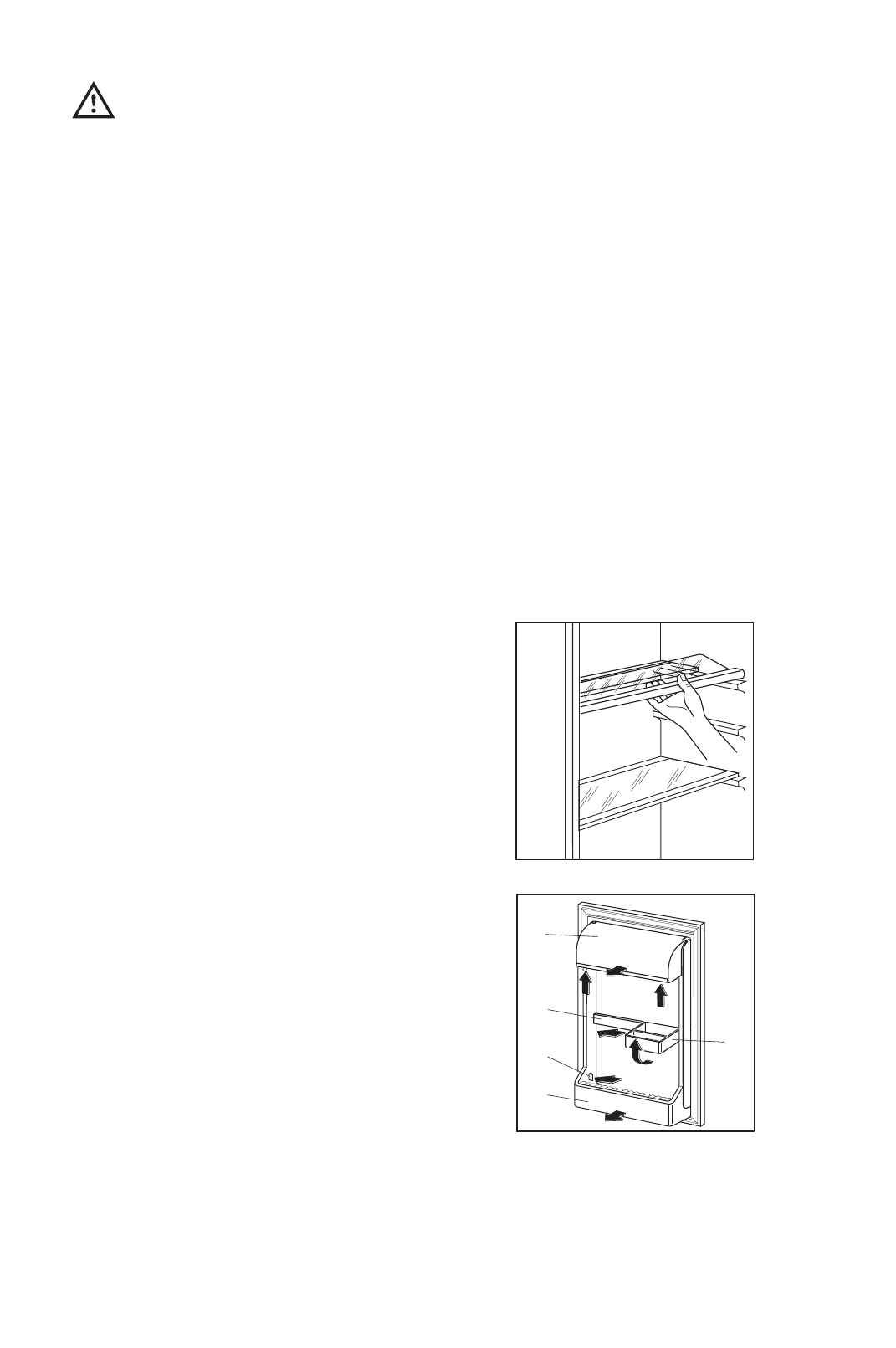
5
D338
S.I.010
1
4
3
b
2
a
Important
During prologed periods of abnormally hot
weather, if the thermostat is seto on too high a
number, the cooling system may operate con-
tinuously and the fridge coolilng plate may not
defrost. Turning the knob to a lower number will
cause the automatic defrosting to resume.
If you wish to return to a lower temperature,
turn the thermostat knob to a higher number,
however you should turn the setting lower
occasionally to allow automatic defrosting.
Fresh food refrigeration
To obtain the best performance, do not store warm
food or evaporating liquids in the refrigerator; do
cover or wrap the food, particularly if it has a strong
flavour.
Do not cover the shelves with any protective material,
such as paper, cardboard or plastic, which may
obstruct the air circulation through them.
To help you use your refrigerator correctly, here are
some more useful hints:
Raw meat (beef, pork, lamb & poultry): wrap in poly-
thene bags and place on top of the salad drawers.
Meat can only be stored safely in this way for one
or two days at the most.
Fruit & vegetables
: these should be thoroughly
cleaned and placed in the bottom salad drawers.
Butter & cheese: these should be placed in special
airtight containers or wrapped in aluminium foil or
polythene bags to exclude as much air as possible.
Milk bottles: these should have a cap and should be
stored in the bottle rack on the door.
The walls of the refrigerator are equipped with run-
ners so that shelves can be positioned as desired.
For better use of space, the front half-shelves can lie
over the rear ones (see fig.).
The door shelves
Depending on the use of the bottle shelf (3) the short
shelf (2) can be adjusted in the direction of the arrow
(a).
For more thorough cleaning, shelves can be removed,
then refitted in their position. To make these adjuste-
ments proceed as follows:
top shelf (1): gradually pull in the direction of the
arrows until it comes free;
middle shelf (2): turn it in the direction of the arrows
until it comes free from the metallic crosspiece (4);
bottle shelf (3): push on the buttons (b) until it comes
free, then pull it in the direction of the arrow.
Normal Operating Sounds
You may hear faint gurgling or bubbling sounds
when the refrigerant is pumped through the coils
below, to the cooling evaporator.
When the compressor is on, the refrigerant is
being pumped round, and you will hear a whirring
sound or pulsating noise from the compressor. A
thermostat controls the compressor, and you will
hear a faint ‘click’ when the thermostat cuts in and
out.


















